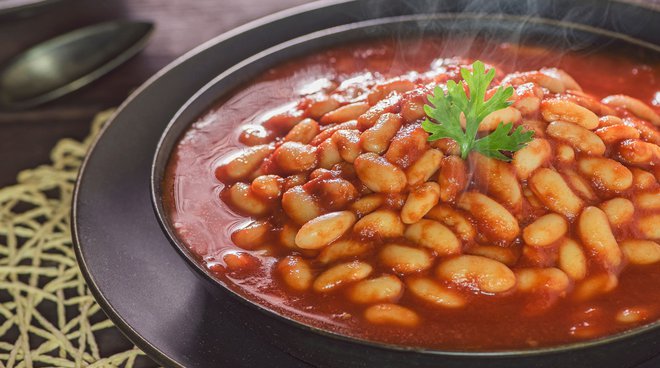Pulp, Passata and Related Products
THE TOMATO IN ARAB AND ITALIAN CULTURE: DIFFERENCES AND POINTS IN COMMON
With its versatility and flavour, the tomato plays a fundamental role in both Italian and Arab cuisines, although it has unique characteristics in both.

In this article, we will discover how Italian chefs use tomatoes, exploring points in common and differences with Arab cuisine.
Italian cuisine: the tomato and its uses
In Italy, the tomato is the main ingredient in a very broad tradition of dishes. From north to south, it is used in sauces, garnishes, preserves and appetisers, enriching the cuisine with its sweet and sour flavours, following the traditional recipes of each region. Much of the heritage of Italian cuisine lies in the quantity of typical dishes that can be found in the various areas of the peninsula. Indeed, for each recipe tomatoes are used in different ways.
Tomato paste is only used to add flavour to dishes.
In Italy, tomato paste is an ingredient used to enhance flavour. It is obtained by a process of cooking and concentrating the purée and is used to give body and richness to sauces and dressings, creating a tasty enhancer for many dishes.
The resulting sauce - darker and thicker, with an intense flavour - is used in small doses to give a fuller flavour to recipes that require a long cooking time, such as ragù. When cooking for many people, for example, it can be useful to add tomato paste to the pot along with the tomato sauce, stir, and finally add it to the pasta.
However, adding tomato paste to pasta (or meat) dishes is not the ideal way to enjoy the goodness, freshness and unmistakable aroma of this delicious ingredient.
The tomato in Arab culture
In the Arab world, the tomato is equally valued and is found in a variety of recipes. It is often found in fresh, crunchy salads such as Lebanese fattoush, enriched with herbs and spices, or in hearty dishes such as maqluba, a delicious rice, meat and vegetable stew.
Traditional and innovative uses.
In many Arab cuisines, tomatoes play a star role in rich and spicy stews, often combined with legumes and meats. One example is bamia, a stew made with lamb okra and tomato and which is characterised by its balance of flavours.
Tomatoes are also used as a base for sauces, soups and garnishes, seasoning couscous and tajine, and for adding a fresh and flavoursome note to fish and seafood dishes. In Arab cuisine, too, the balanced acidity and sweetness of tomatoes help harmonise the flavours of dishes by complementing and elevating the other ingredients.
Tomato: the fruit that unites culinary cultures around the world
Italian and Arab cultures have developed unique ways of incorporating tomatoes into their dishes, exploring the potential of this versatile fruit. Cooking techniques, preparation methods and flavour pairings vary, reflecting the diversity and richness of the two culinary traditions.
As a symbol of freshness and vitality, the tomato is an ingredient that underlines the similarities and differences between Italian and Arab cuisines. In both cultures, it is an expression of a common love for genuine, tasty food, capable of uniting people with the universal language of flavours. Whether in the enveloping aroma of an Italian ragù or in the spicy flavour of an Arab dish, the tomato continues to delight palates and enrich the table with its unfailing presence.
Explore Italian cuisine with Pomì!
NEWS
ALSO IN FOOD TRENDS
Pulp, Passata and Related Products
Vegetarian cooking: Middle Eastern recipes with tomato sauce
Vegetarian cuisine has deep roots in many cultures, and Middle Eastern cuisine is by no means an exception.
Pulp, Passata and Related Products
How to prepare real Italian spaghetti with Pomì ingredients
How can you prepare Italian spaghetti? This delicious first course is to all intents and purposes one of the most famous icons of Mediterranean cuisine.
Pulp, Passata and Related Products
Italian taste meets the Middle East: recipes with Italian tomatoes
When the vibrant flavours of the Middle East merge with Italian tomatoes and the culinary tradition of Italy, dishes are born that are nothing less than an ode to the harmony of tastes.


